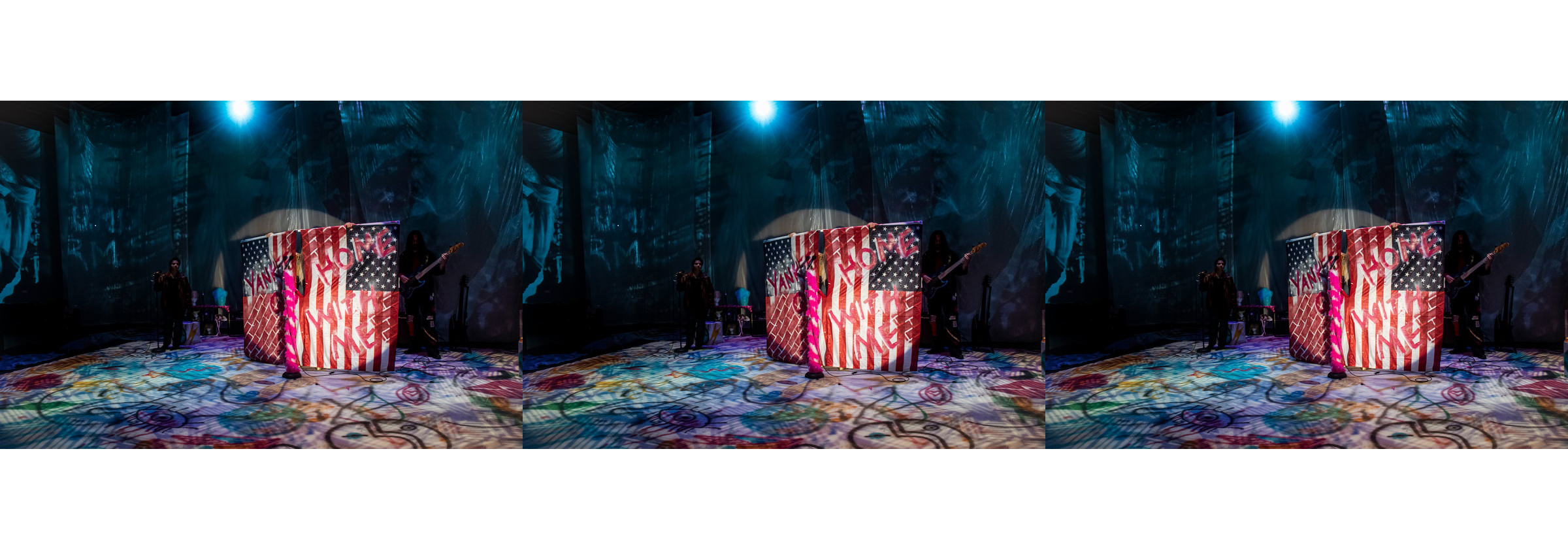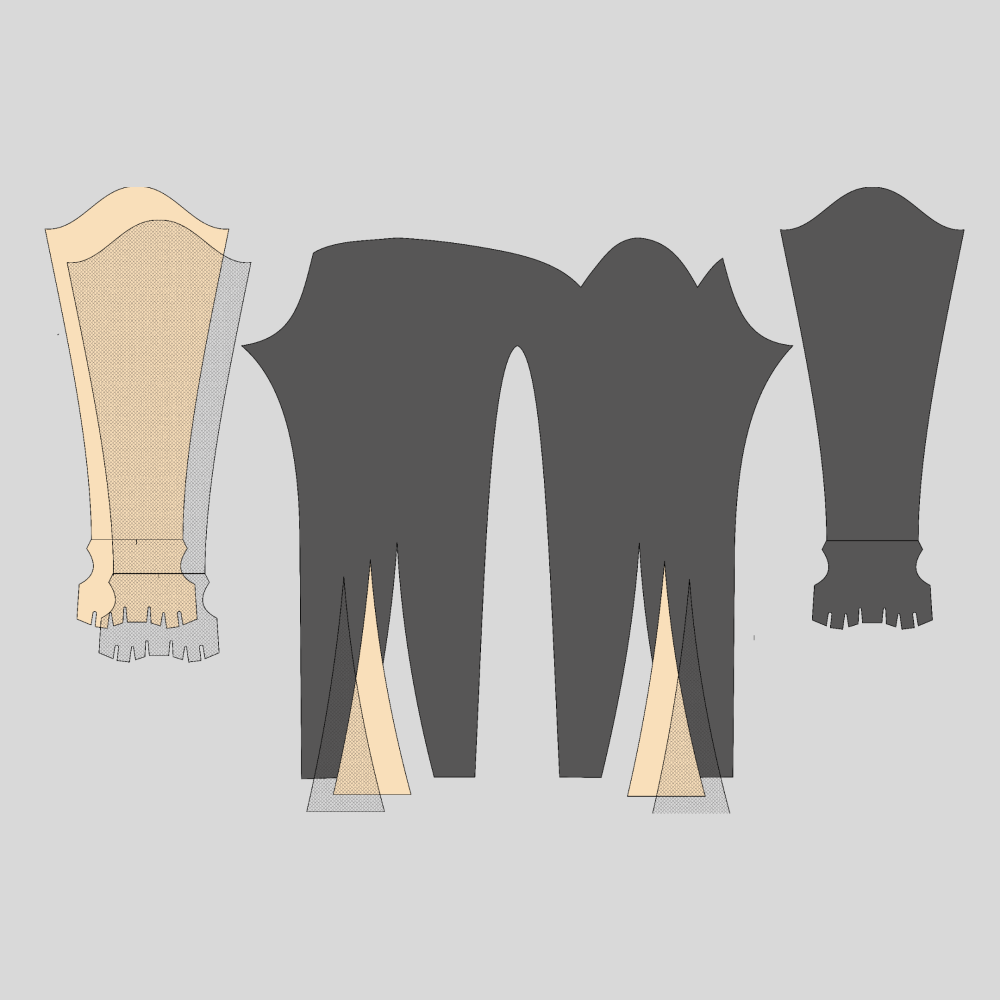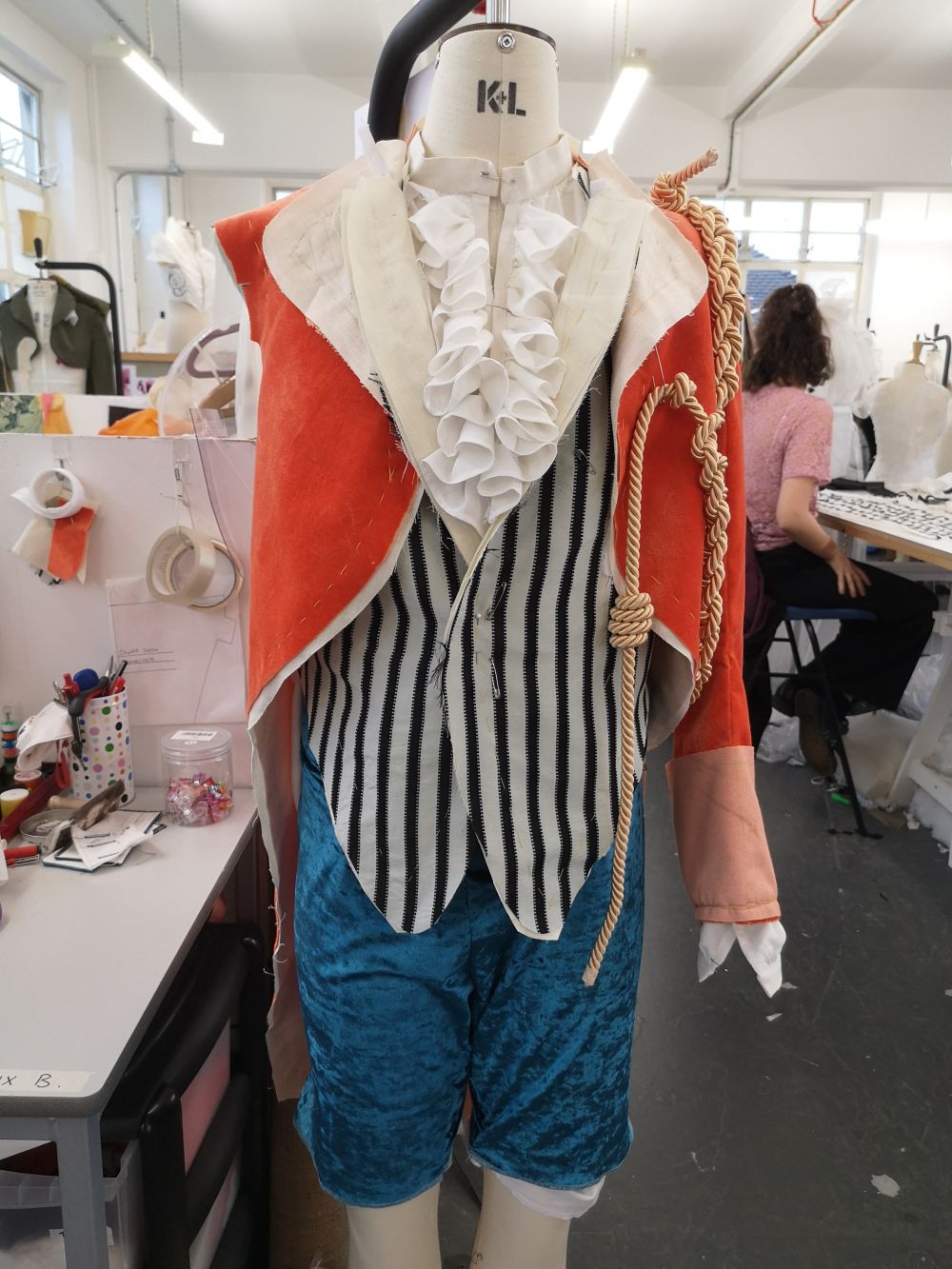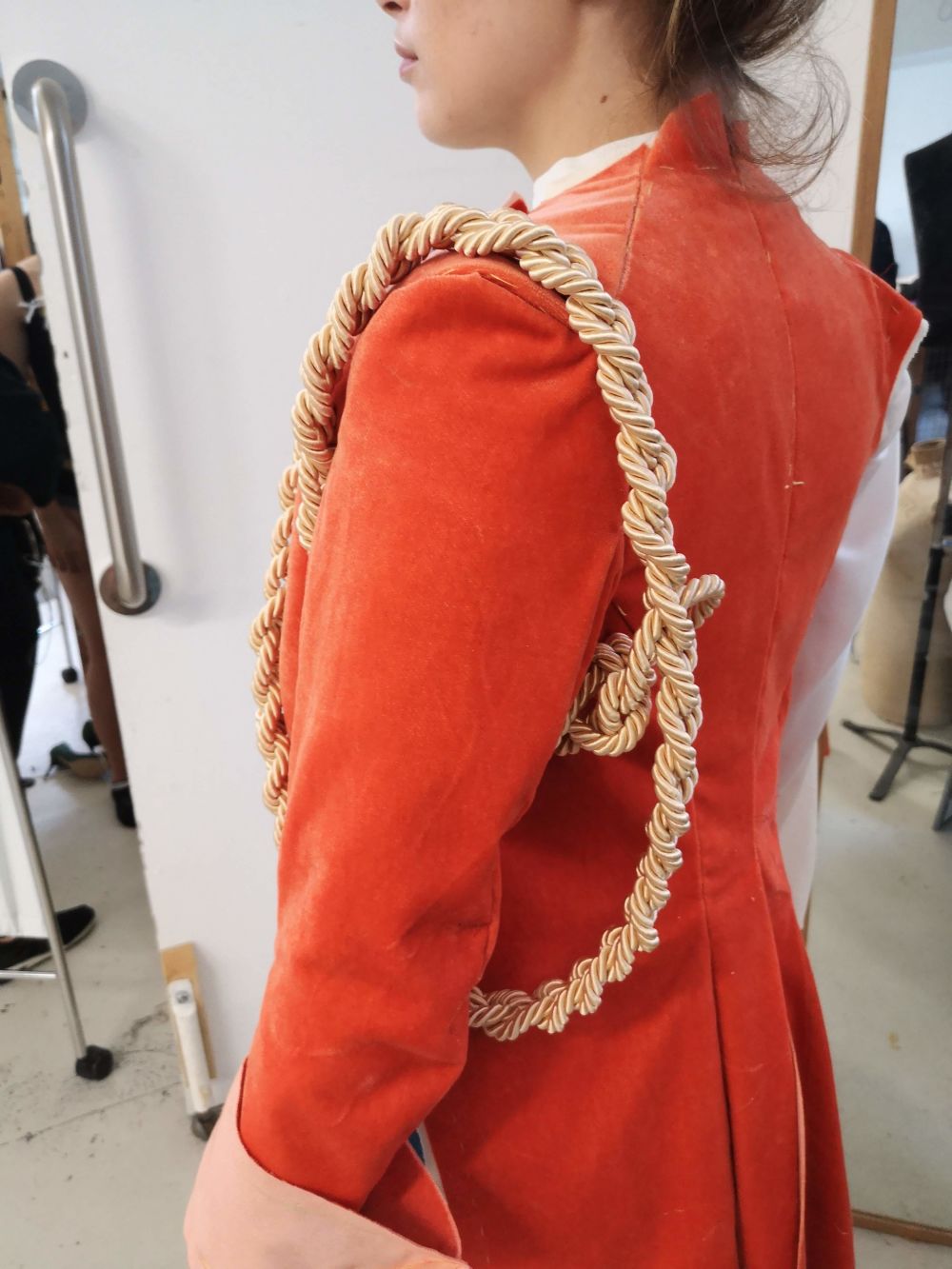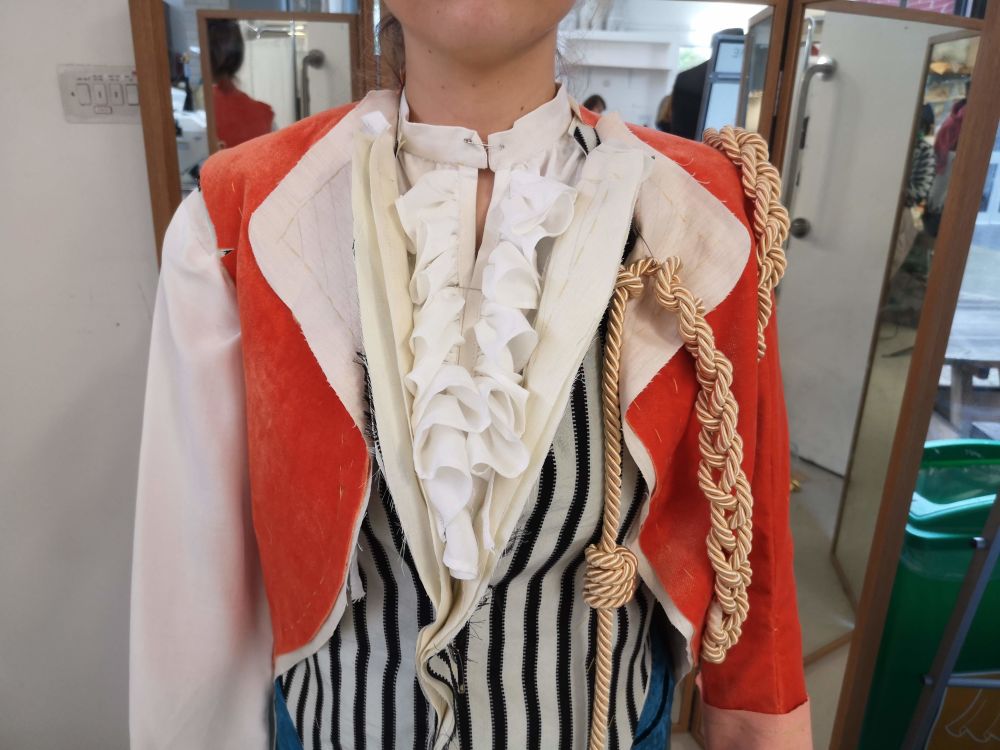Alix Burgess graduated this year from the BA (Hons) Costume for Theatre and Screen at Wimbledon College of Arts. Their work revolves around how costume, movement and body intersect with identity. Alix’s body of work includes an experimental blacklight tutu inspired by jellyfish and the digital development of an ice skating outfit that blurs the line between male and female.
As well as the normal stresses of graduating, Alix had to deal with graduating during a pandemic. When access to the workshops was no longer possible, Alix had to rethink their whole project, as well as learn new skills in a very short space of time, such as creating patterns digitally.
We spoke to Alix about their time at Wimbledon, and how they explore identity in their work.

Time at Wimbledon
I chose Wimbledon partly because of its reputation for costume proceeded itself! Both in conversations with others or when I visited one of the degree shows while I was studying at sixth form. I was very impressed by the amount of technical detail from the costumes of the students in past years, and honestly, was most excited about the inclusion of how to make a tutu during the second year.
My three years at Wimbledon from 2017-2020 were exciting, to say the least! Especially with our new course leader Kevin Freeman, who is great at finding live opportunities for us, such as working in collaboration with the Academy of Live & Recorded Arts (ALRA) and the V&A, even the Patterns of Fashion Awards - encouraging us to be bolder. We have an amazing team of technical staff that are very knowledgeable and eager to help out with whatever project you have going on at the moment, and some amazingly equipped studios. My first year was about mastering the basics, then going onto collaborative and live projects in the second year, and topping it off with personal projects and collaborations in the third year. In my second year, I also had the opportunity to go abroad and experience life in California - a very different costume scene in London!
Graduating during the pandemic was very strange and forced us to adapt quickly. Leaving spacious studios, we all started working all over the UK. Many of my fellow graduates had to re-imagine their final projects, including myself. Rather than a physical costume as I was planning, I learnt how to use Adobe Illustrator and how to draft stretch blocks digitally to submit as my final assignment. I'm happy to say it worked out! My final project is a set of digitally rendered patterns that would be printed and laid to cut and fabricate when back at the machine.

Interest in costume design
I started to develop an interest in costume through cosplay. Some of my first experiences making clothes were through conventions when I was about fifteen years old, learning how to make a bodice pattern through duct tape and perseverance. Since then, I have been able to refine my techniques and have more respect for construction and representation as a whole.
In fact, through this course, I have been able to focus particularly on how gender is shown and perceived through costume, and this is something that came through both in my dissertation and my final projects. One of these projects is one that I was unfortunately unable to finish in time due to the pandemic but is a late 18th-century lord outfit that is fitted to a female performer, which brings the question of how to alter the silhouette and gendered language of the clothes and performer to read as 'male' to the audience.
The interest in gender expression comes mostly from my own personal struggles with gender, being Non-Binary and observing how gendered the body is within the industry and the use of gender non-conformity as a tool in the theatre that needs more discussion.
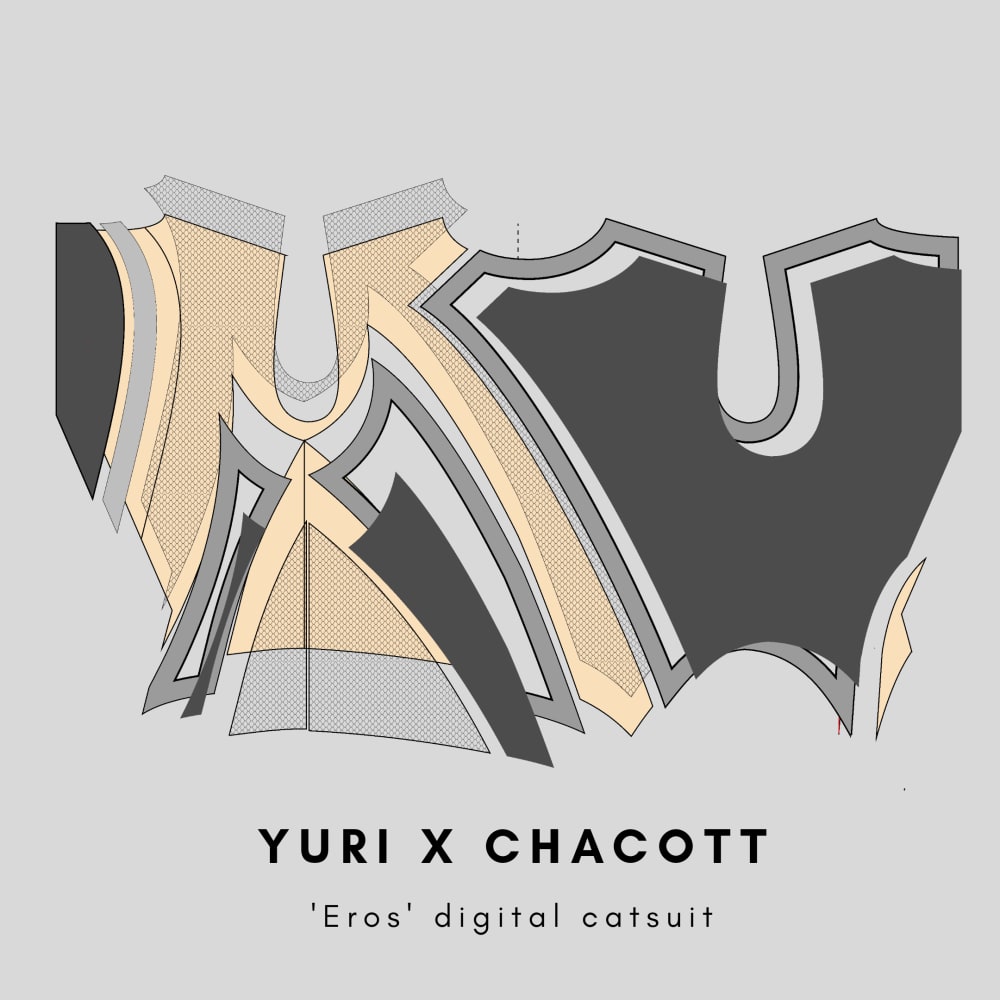
Gender in my final project
My final project was based on real costume design for the anime Yuri On Ice. The design was in collaboration with the Japanese dancewear house Chacott, for a professional male skater. However, the design shows distinct female attributes in both the choice of fabrics and in the inclusion of an asymmetric skirt. Whilst the show itself is fictional, it is heavily based on real-life events and the international rules that govern international skating and so it was incredibly interesting to see how the show broke the rules - especially in regards to the masculinity of the effeminate man.
This idea came about as I wanted to continue my final year theme of dance-wear, which started off with a tutu and also be somewhat opposite of 'The Lord' by looking at femininity on a male frame. Most of the ideas around gender were developed in an essay that accompanied my practical work of drafting the costume digitally in Adobe Illustrator, and it draws upon concurrent themes of masculinity in dance, most notably ballet, as well as the intersections of other cultures outside the western paradigm in how masculinity is defined and praised.
Gallery
What's next?
From all the exploration into gender and costume theory in my last year, I wanted to continue learning and applying, so I am excited to pursue an MA in Gender Studies at the University of East Anglia! I would like to help develop more of a framework in which we can talk about gender and representation in the arts, and if there is anyone out there who wants to reach out please do. I want to continue working in the costume field wherever possible, and I already have a few opportunities lined up in Norwich alongside my MA. It has been a devastating year in the arts, particularly film and theatre, with many places being forced to close and people needing to find their livelihoods outside the arts. I look forward to when people can come back and hope to be there beside you all. Stay Safe everyone.
